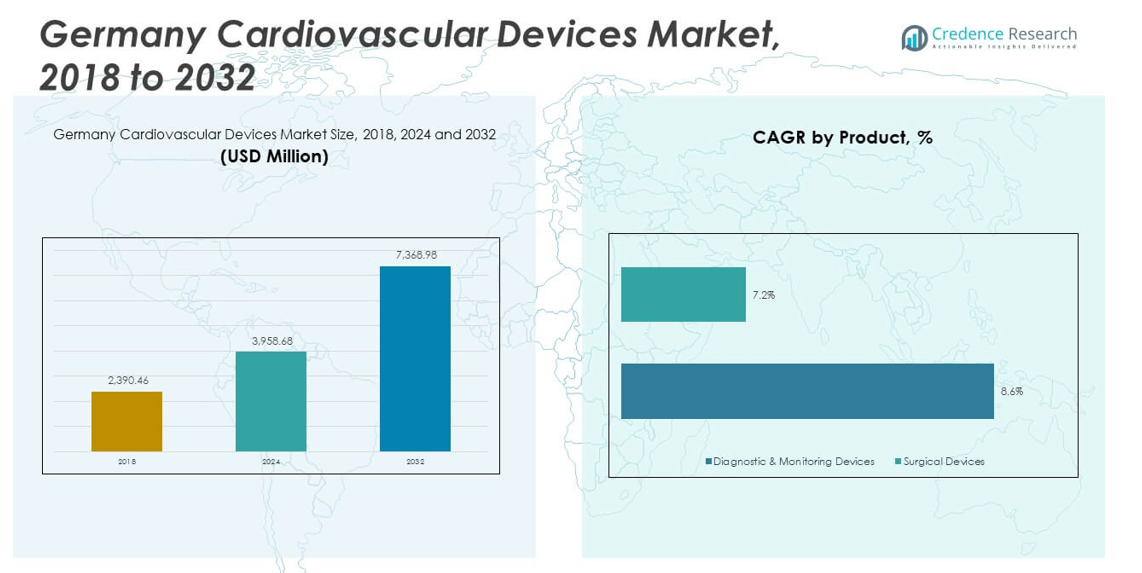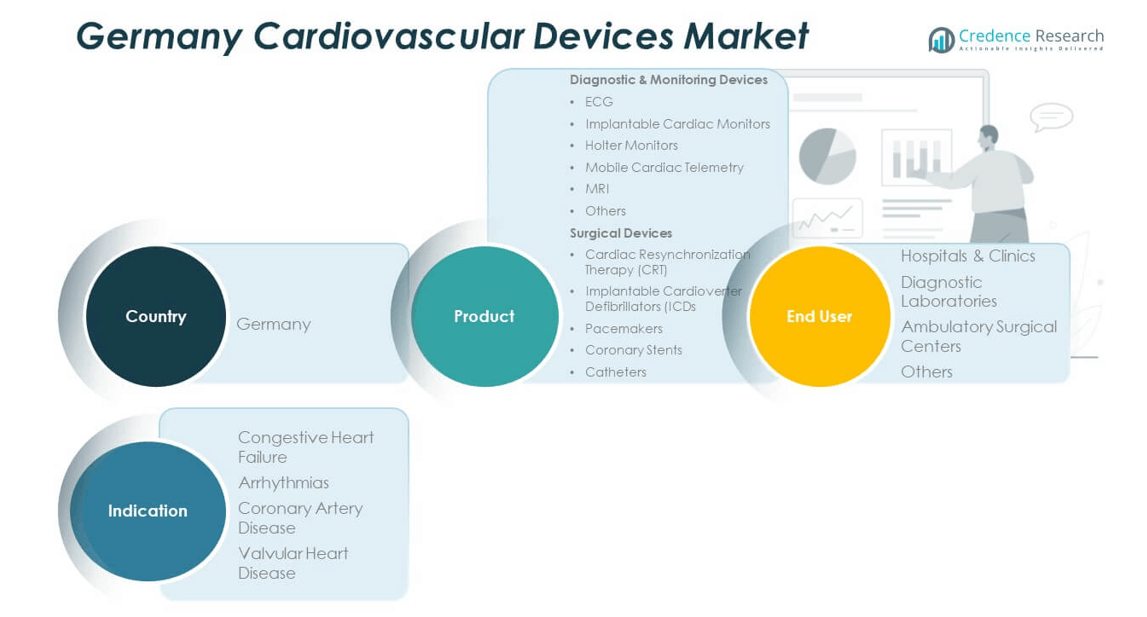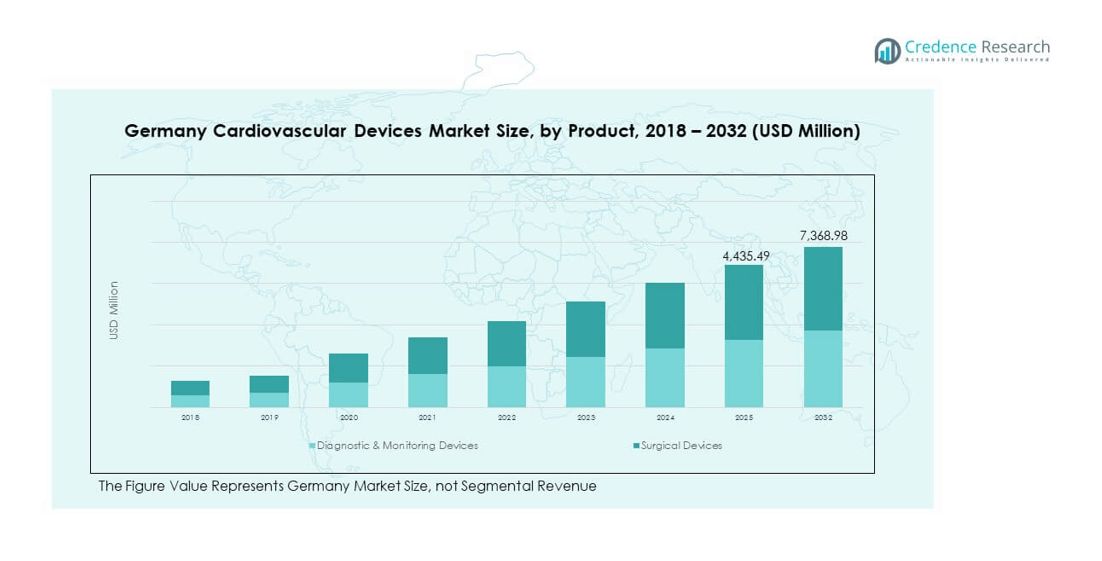CHAPTER NO. 1 : GENESIS OF THE MARKET
1.1 Market Prelude – Introduction & Scope
1.2 The Big Picture – Objectives & Vision
1.3 Strategic Edge – Unique Value Proposition
1.4 Stakeholder Compass – Key Beneficiaries
CHAPTER NO. 2 : EXECUTIVE LENS
2.1 Pulse of the Industry – Market Snapshot
2.2 Growth Arc – Revenue Projections (USD Million)
2.3. Premium Insights – Based on Primary Interviews
CHAPTER NO. 3 : CARDIOVASCULAR DEVICES MARKET FORCES & INDUSTRY PULSE
3.1 Foundations of Change – Market Overview
3.2 Catalysts of Expansion – Key Market Drivers
3.2.1 Momentum Boosters – Growth Triggers
3.2.2 Innovation Fuel – Disruptive Technologies
3.3 Headwinds & Crosswinds – Market Restraints
3.3.1 Regulatory Tides – Compliance Challenges
3.3.2 Economic Frictions – Inflationary Pressures
3.4 Untapped Horizons – Growth Potential & Opportunities
3.5 Strategic Navigation – Industry Frameworks
3.5.1 Market Equilibrium – Porter’s Five Forces
3.5.2 Ecosystem Dynamics – Value Chain Analysis
3.5.3 Macro Forces – PESTEL Breakdown
3.6 Price Trend Analysis
3.6.1 Regional Price Trend
3.6.2 Price Trend by product
CHAPTER NO. 4 : KEY INVESTMENT EPICENTER
4.1 Regional Goldmines – High-Growth Geographies
4.2 Product Frontiers – Lucrative Product Categories
4.3 Application Sweet Spots – Emerging Demand Segments
CHAPTER NO. 5: REVENUE TRAJECTORY & WEALTH MAPPING
5.1 Momentum Metrics – Forecast & Growth Curves
5.2 Regional Revenue Footprint – Market Share Insights
5.3 Segmental Wealth Flow – Product & End User Revenue
CHAPTER NO. 6 : TRADE & COMMERCE ANALYSIS
6.1. Import Analysis by Region
6.1.1. Germany Cardiovascular Devices Market Import Volume By Region
6.2. Export Analysis by Region
6.2.1. Germany Cardiovascular Devices Market Export Volume By Region
CHAPTER NO. 7 : COMPETITION ANALYSIS
7.1. Company Market Share Analysis
7.1.1. Germany Cardiovascular Devices Market: Company Market Share
7.1. Germany Cardiovascular Devices Market Company Volume Market Share
7.2. Germany Cardiovascular Devices Market Company Revenue Market Share
7.3. Strategic Developments
7.3.1. Acquisitions & Mergers
7.3.2. New Product Launch
7.3.3. Regional Expansion
7.4. Competitive Dashboard
7.5. Company Assessment Metrics, 2024
CHAPTER NO. 8 : CARDIOVASCULAR DEVICES MARKET – BY PRODUCT SEGMENT ANALYSIS
8.1. Cardiovascular Devices Market Overview by Product Segment
8.1.1. Cardiovascular Devices Market Volume Share By Product
8.1.2. Cardiovascular Devices Market Revenue Share By Product
8.2. Diagnostic & Monitoring Devices
8.2.1. ECG
8.2.2. Implantable Cardiac Monitors
8.2.3. Holter Monitors
8.2.4. Mobile Cardiac Telemetry
8.2.5. MRI
8.2.6. Others
8.3. Surgical Devices
8.3.1. Cardiac Resynchronization Therapy (CRT)
8.3.2. Implantable Cardioverter Defibrillators (ICDs
8.3.3. Pacemakers
8.3.4. Coronary Stents
8.3.5. Catheters
CHAPTER NO. 9 : CARDIOVASCULAR DEVICES MARKET – BY END USER SEGMENT ANALYSIS
9.1. Cardiovascular Devices Market Overview by End User Segment
9.1.1. Cardiovascular Devices Market Volume Share By End User
9.1.2. Cardiovascular Devices Market Revenue Share By End User
9.2. Hospitals & Clinics
9.3. Diagnostic Laboratories
9.4. Ambulatory Surgical Centers
9.5. Others
CHAPTER NO. 10 : CARDIOVASCULAR DEVICES MARKET – BY INDICATION SEGMENT ANALYSIS
10.1. Cardiovascular Devices Market Overview by Indication Segment
10.1.1. Cardiovascular Devices Market Volume Share By Indication
10.1.2. Cardiovascular Devices Market Revenue Share By Indication
10.2. Congestive Heart Failure
10.3. Arrhythmias
10.4. Coronary Artery Disease
10.5. Valvular Heart Disease
CHAPTER NO. 14 : GERMANY CARDIOVASCULAR DEVICES MARKET – COUNTRY ANALYSIS
11.1. Germany Cardiovascular Devices Market Overview by Country Segment
11.1.1. Germany Cardiovascular Devices Market Volume Share By Region
11.1.2. Germany Cardiovascular Devices Market Revenue Share By Region
11.2. Germany
11.2.1. Germany Cardiovascular Devices Market Volume By Country
11.2.2. Germany Cardiovascular Devices Market Revenue By Country
11.2.3. Product
11.2.4. Germany Cardiovascular Devices Market Volume By Product
11.2.5. Germany Cardiovascular Devices Market Revenue By Product
11.2.6. End User
11.2.7. Germany Cardiovascular Devices Market Volume By End User
11.2.8. Germany Cardiovascular Devices Market Revenue By End User
11.2.9. Indication
11.2.10. Germany Cardiovascular Devices Market Volume By Indication
11.2.11. Germany Cardiovascular Devices Market Revenue By Indication
CHAPTER NO. 12 : COMPANY PROFILES
12.1. Siemens Healthineers
12.1.1. Company Overview
12.1.2. Product Portfolio
12.1.3. Financial Overview
12.1.4. Recent Developments
12.1.5. Growth Strategy
12.1.6. SWOT Analysis
12.2. BIOTRONIK SE & Co. KG
12.3. B. Braun Melsungen AG
12.4. Berlin Heart GmbH
12.5. Medtronic plc
12.6. Abbott Laboratories
12.7. Boston Scientific Corporation
12.8. Edwards Lifesciences Corporation
12.9. Terumo Corporation
12.10. Johnson & Johnson
12.11. Others










